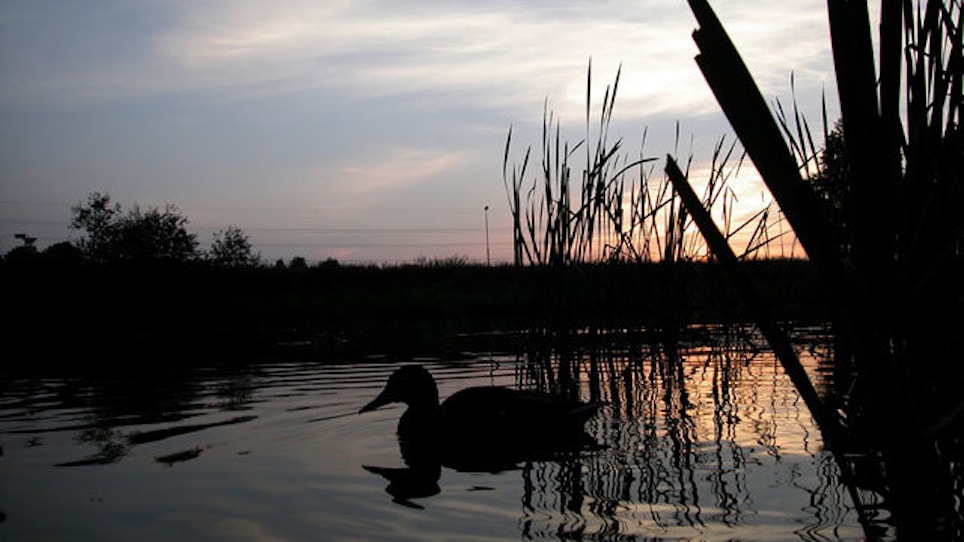It’s not the most intuitive connection, but for duck hunters, the recent passage of the Farm Bill should be cause for celebration — maybe cartwheels even.
While there were many items in the bill that had little to do with ducks or duck hunters — indeed most of the more public provisions seemed far from the conservation realm — the work going on behind the headlines has the potential to be really good for waterfowl in the U.S.
“[In terms of] what drives duck abundance, the Farm Bill has a bigger impact than anything else on the planet,” says John Devney, vice president of U.S. policy for Delta Waterfowl.
That support has been echoed across the board.
“I can honestly say, I’ve been doing farm bills since 1996. This is arguably the best one we’ve had since then and it may be best one for waterfowl that we’ve seen,” says Dan Wrinn, director of public policy at Ducks Unlimited. “It’s very strong. It’s going to protect wetlands it’s going to protect grasslands. And that’s good.”
Here are some highlights:
Two Thumbs Up: Re-linking Crop Insurance With Conservation Compliance
This is the big one for duck hunters: When it comes to safety nets, perhaps the most important one for farmers and ranchers is crop insurance. In the 1985 Farm Bill, the ability for farmers and ranchers to get assistance from the government was partially linked to their compliance with a set of conservation standards — things like not draining wetlands to put in a new crop.
“It’s very important to understand that the vast majority of farmers and ranchers are already in conservation compliance,” says Wrinn. “[That link] protected the landscape from a few bad actors.”
But in 1996, that link was erased and conservation compliance was no longer a requirement for receiving crop insurance. But it wasn’t immediately apparent that would be problematic.
“I don’t think anyone quite understood the implications of at the time,” Devney says.
With low numbers of producers relying on crop insurance at that time, there was little risk. However, since then, crop insurance has become the primary federal program, making the link between the two that much more important.
“(Since most are already in compliance) this is not something new they’re being burdened with,” Wrinn said. “We’ve written the rules very clearly. They will know the whole goal of the program is to keep folks from getting out of compliance. Furthermore, we’ve built into it the opportunity for the producer to get back into compliance as they move forward.”
Maintaining robust wetlands, and equally important, backing that maintenance with things like conservation compliance, has been a key priority for duck populations. And the numbers prove that out, says Devney. In recent years, the U.S. prairie pothole region has produced the lion’s share of waterfowl numbers when compared to similar habitat in Canada — primarily, experts say, because U.S. habitat is in far better condition and disappearing at a much lower rate than our neighbors to the north.
Furthermore, when one weighs the cost of keeping things in good shape versus getting them back to the way they were, it’s a good deal.
“In reality it probably saves the American taxpayer some money,” Devney added.
One Thumb Up: Sod Saver
For hundreds of years, we’ve been breaking untouched ground for agriculture. But in that time, we’ve also learned there’s a balance to be found between ag and untouched habitat.
“We’ve got the best ag acres in production already,” Wrinn says.
What’s left isn’t typically well-suited for production.
Enter the sod saver provision. Essentially, producers who choose to break up native prairie will not be eligible for the same dollars as those who farm acres that are already broken.
Currently, grasslands are some of the most threatened landscapes in North America. While we’re not losing them in vast chunks, we’re losing small pieces all the time. And the sum means millions of acres lost in previous decades.
While the sod saver provision was a plus, it comes with a catch. The provision was only enacted in a few states — Montana, North Dakota, South Dakota, Minnesota, Iowa and Nebraska.
But grassland loss is happening across the country in ways that are impacting more than just waterfowl.
“Grasslands in the U.S. are very threatened and they need attention from coast to coast,” Wrinn says.
In the spirit of compromise, conservationists seem inclined to chalk this one up as a plus, but have hopes it will extend to the entire country in upcoming iterations.
Thumbs Down: CRP Lands
Let us be clear: This is a qualified thumbs down. There were few that expected a different outcome.
The number of acres enrolled in the CRP program has been steadily declining for years, and this bill will not change that.
With the push to reduce spending, CRP lands have been cut from a high of 39 million acres in the mid 2000s, to 32.5 million acres in the 2008 Farm Bill, to 24 million acres in this most recent version.
“It’s the 900-pound gorilla in the room,” Devney says. “It’s been in the crosshairs for a long time because it represents a big expense.”
On the plus side, the CRP that is being funded is expected to prioritize wildlife habitat. However, the decline has the potential to be problematic, especially as commodity prices decline.
“Beyond the implications for ducks, CRP has been an important tool in the toolbox for individual farmers or ranchers,” Devney says. “[They] could use it as a way to hedge operations when crop prices were not good.”
He says he worries that as commodity prices decline, the ability to use CRP will be limited.
That said, there were few surprised by the cuts.
“We’re the victim of circumstance on that one,” he says.
Photo Credit: Ablestock.com/Thinkstock






